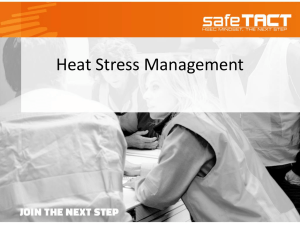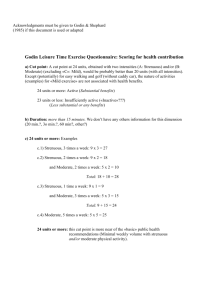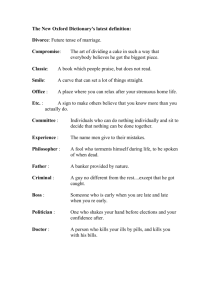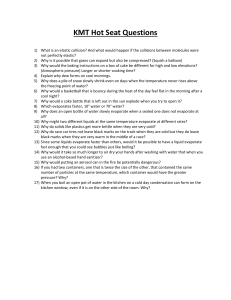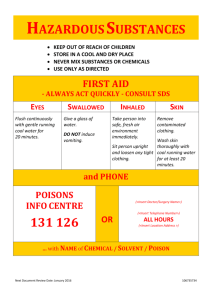Preventing Heat Related Illnesses
advertisement
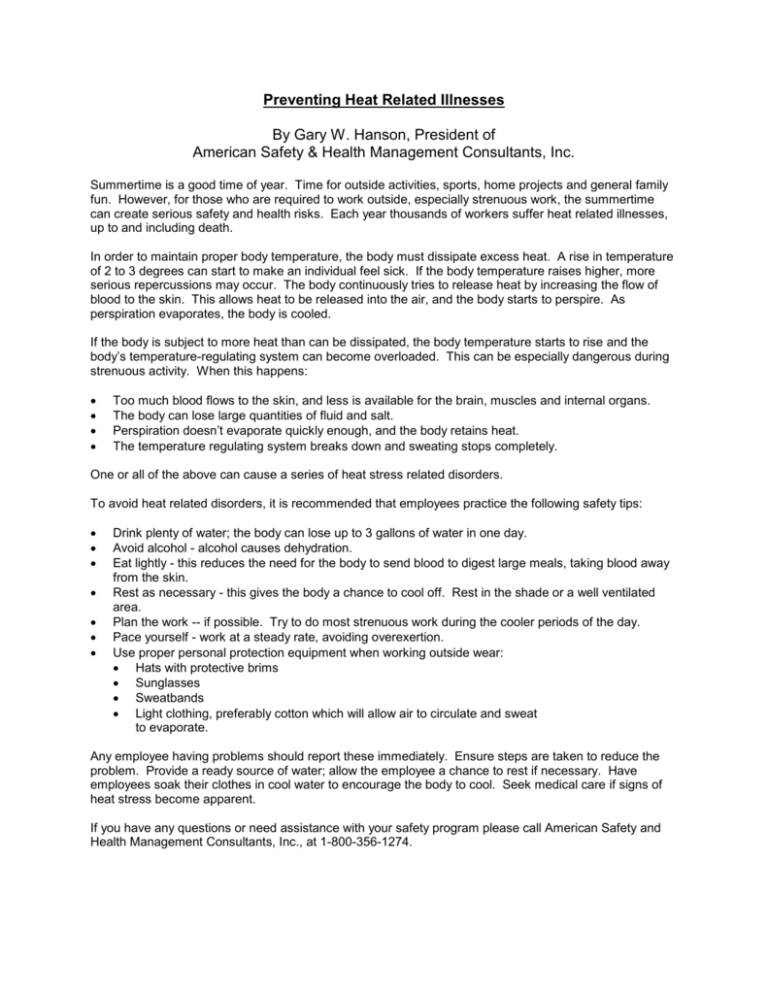
Preventing Heat Related Illnesses By Gary W. Hanson, President of American Safety & Health Management Consultants, Inc. Summertime is a good time of year. Time for outside activities, sports, home projects and general family fun. However, for those who are required to work outside, especially strenuous work, the summertime can create serious safety and health risks. Each year thousands of workers suffer heat related illnesses, up to and including death. In order to maintain proper body temperature, the body must dissipate excess heat. A rise in temperature of 2 to 3 degrees can start to make an individual feel sick. If the body temperature raises higher, more serious repercussions may occur. The body continuously tries to release heat by increasing the flow of blood to the skin. This allows heat to be released into the air, and the body starts to perspire. As perspiration evaporates, the body is cooled. If the body is subject to more heat than can be dissipated, the body temperature starts to rise and the body’s temperature-regulating system can become overloaded. This can be especially dangerous during strenuous activity. When this happens: Too much blood flows to the skin, and less is available for the brain, muscles and internal organs. The body can lose large quantities of fluid and salt. Perspiration doesn’t evaporate quickly enough, and the body retains heat. The temperature regulating system breaks down and sweating stops completely. One or all of the above can cause a series of heat stress related disorders. To avoid heat related disorders, it is recommended that employees practice the following safety tips: Drink plenty of water; the body can lose up to 3 gallons of water in one day. Avoid alcohol - alcohol causes dehydration. Eat lightly - this reduces the need for the body to send blood to digest large meals, taking blood away from the skin. Rest as necessary - this gives the body a chance to cool off. Rest in the shade or a well ventilated area. Plan the work -- if possible. Try to do most strenuous work during the cooler periods of the day. Pace yourself - work at a steady rate, avoiding overexertion. Use proper personal protection equipment when working outside wear: Hats with protective brims Sunglasses Sweatbands Light clothing, preferably cotton which will allow air to circulate and sweat to evaporate. Any employee having problems should report these immediately. Ensure steps are taken to reduce the problem. Provide a ready source of water; allow the employee a chance to rest if necessary. Have employees soak their clothes in cool water to encourage the body to cool. Seek medical care if signs of heat stress become apparent. If you have any questions or need assistance with your safety program please call American Safety and Health Management Consultants, Inc., at 1-800-356-1274.
